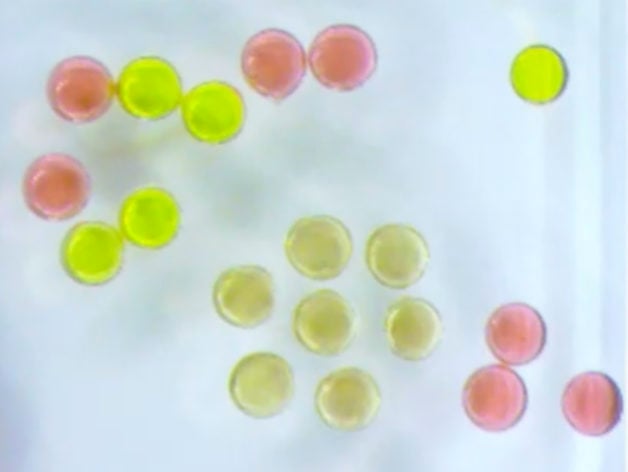Scientists from the Department of Energy’s Lawrence Berkeley National Laboratory made a scientific breakthrough using a modified 3D printer to create a magnetic device out of liquids.
“We’ve made a new material that is both liquid and magnetic. No one has ever observed this before… This opens the door to a new area of science in magnetic soft matter,” explains Tom Russell, a visiting faculty scientist at Berkeley Lab who led the study. He has been working on developing 3D printable all-liquid structures for the past seven years.
It’s thought that this breakthrough could be used in applications such as 3D printing artificial cells to deliver targeted therapies to diseased cells or creating flexible liquid robots that can adapt to their surroundings.
Forming Liquid Structures from Ferrofluids
Xubo Liu is the study’s lead author, together with Russell the two worked on forming liquid structures from ferrofluids. These are solutions of iron-oxide particles that, when in the presence of a magnet, become strongly magnetic.
“We wondered, ‘If a ferrofluid can become temporarily magnetic, what could we do to make it permanently magnetic, and behave like a solid magnet but still look and feel like a liquid?’” explains Russell.
The two used a 3D printing technique and printed one-millimeter droplets containing iron-oxide nanoparticles. They then showed that the nanoparticles formed a solid shell, meaning they would come to the droplet’s surface.
The scientists put the droplets into a magnetic solution to make them magnetic. The plan worked but, better yet, they found that when the magnetic coil was removed the droplets came together and became permanently magnetic.
“We almost couldn’t believe it… Before our study, people always assumed that permanent magnets could only be made from solids,” said Russell.
As well as being magnetic, the droplets can change shape to adapt to their surroundings without losing their magnetic properties. Russel explains that it’s possible to switch between a magnetic mode and a nonmagnetic mode. When the magnetic mode is on, they can be remotely controlled.
“What began as a curious observation ended up opening a new area of science… It’s something all young researchers dream of, and I was lucky to have the chance to work with a great group of scientists supported by Berkeley Lab’s world-class user facilities to make it a reality,” said Liu.
Liu and Russell continue to explore this new area of science. Visit the Berkeley website for more details.
Source: Berkeley Lab

License: The text of "Berkeley Scientists 3D Print a Liquid Magnetic Device" by All3DP is licensed under a Creative Commons Attribution 4.0 International License.